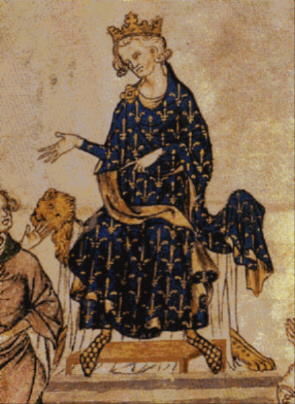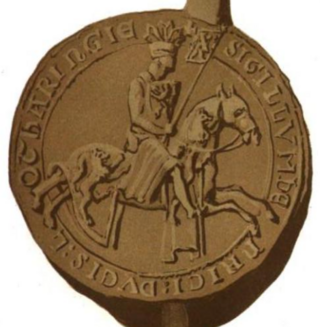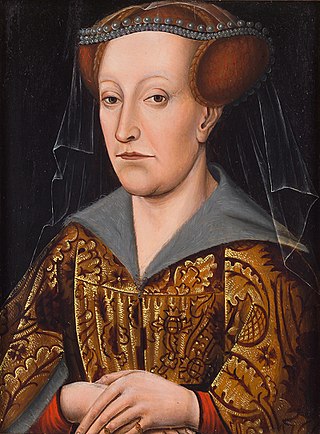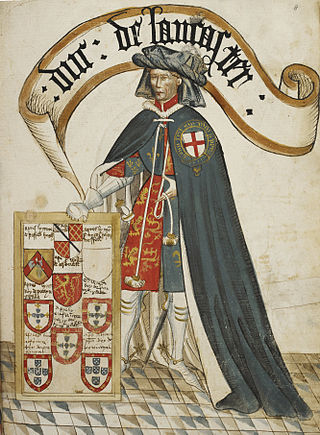| |||||
| Decades: | |||||
|---|---|---|---|---|---|
| See also: | Other events of 1430 History of France • Timeline • Years | ||||
Events from the year 1430 in France
| |||||
| Decades: | |||||
|---|---|---|---|---|---|
| See also: | Other events of 1430 History of France • Timeline • Years | ||||
Events from the year 1430 in France
The 1430s decade ran from January 1, 1430, to December 31, 1439.

Year 1430 (MCDXXX) was a common year starting on Sunday of the Julian calendar.

Prince Philip, Duke of Edinburgh, was the husband of Queen Elizabeth II. As such, he served as the consort of the British monarch from Elizabeth's accession as queen on 6 February 1952 until his death in 2021, making him the longest-serving royal consort in history.

Philip VI, called the Fortunate or the Catholic and of Valois, was the first king of France from the House of Valois, reigning from 1328 until his death in 1350.

Charles of Orléans was Duke of Orléans from 1407, following the murder of his father, Louis I, Duke of Orléans. He was also Duke of Valois, Count of Beaumont-sur-Oise and of Blois, Lord of Coucy, and the inheritor of Asti in Italy via his mother Valentina Visconti.

Pierre Cauchon was Bishop of Beauvais from 1420 to 1432. He was a strong partisan of English interests in France during the latter years of the Hundred Years' War. He was the judge in the trial of Joan of Arc and played a key role in her execution. The Catholic Church overturned his verdict in 1456.

Henry II of Brabant was Duke of Brabant and Lothier after the death of his father Henry I in 1235. His mother was Matilda of Boulogne.

Isabella of Portugal was Duchess of Burgundy from 1430 to 1467 as the third wife of Duke Philip the Good. Their son was Charles the Bold, the last Valois Duke of Burgundy.

Philip III was Duke of Burgundy from 1419 until his death. He was a member of a cadet line of the Valois dynasty, to which all 15th-century kings of France belonged. During his reign, the Burgundian State reached the apex of its prosperity and prestige, and became a leading centre of the arts.

Jacqueline, of the House of Wittelsbach, was a noblewoman who ruled the counties of Holland, Zeeland and Hainaut in the Low Countries from 1417 to 1433. She was also Dauphine of France for a short time between 1415 and 1417 and Duchess of Gloucester in the 1420s, if her marriage to Humphrey, Duke of Gloucester, is accepted as valid.

Henry of Grosmont, Duke of Lancaster was an English statesman, diplomat, soldier, and Christian writer. The owner of Bolingbroke Castle in Lincolnshire, Grosmont was a member of the House of Plantagenet, which was ruling over England at that time. He was the wealthiest and most powerful peer of the realm.

The siege of Calais occurred at the conclusion of the Crécy campaign, when an English army under the command of King Edward III of England successfully besieged the French town of Calais during the Edwardian phase of the Hundred Years' War.

John II of Luxembourg, Count of Ligny was a French nobleman and soldier, a younger son of John of Luxembourg, Lord of Beauvoir, and Marguerite of Enghien. His older brother Peter received his mother's fiefs, including the County of Brienne, while John received Beaurevoir. He married Jeanne de Béthune, Viscountess of Meaux, widow of Robert of Bar, on 23 November 1418, and became step-father to Jeanne de Bar, Countess of Marle and Soissons. He and Jeanne de Béthune had no children.

The siege of Compiègne (1430) was conducted by Duke Philip III of Burgundy after the town of Compiègne had refused to transfer allegiance to him under the terms of a treaty with Charles VII of France. The siege is perhaps best known for Joan of Arc's capture by Burgundian troops while accompanying an Armagnac force during a skirmish outside the town on 23 May 1430. Although this was otherwise a minor siege, both politically and militarily, and ultimately ended in a defeat for the Burgundians, the capture of Joan of Arc was an important event of the Hundred Years' War.

The Lancastrian War was the third and final phase of the Anglo-French Hundred Years' War. It lasted from 1415, when King Henry V of England invaded Normandy, to 1453, when the English lost Bordeaux. It followed a long period of peace from the end of the Caroline War in 1389. The phase is named after the House of Lancaster, the ruling house of the Kingdom of England, to which Henry V belonged.
Events from the 1430s in England.
Events from the year 1940 in France.
Events in the year 1918 in Germany.
Events from the year 1467 in France
Events from the year 1624 in France.